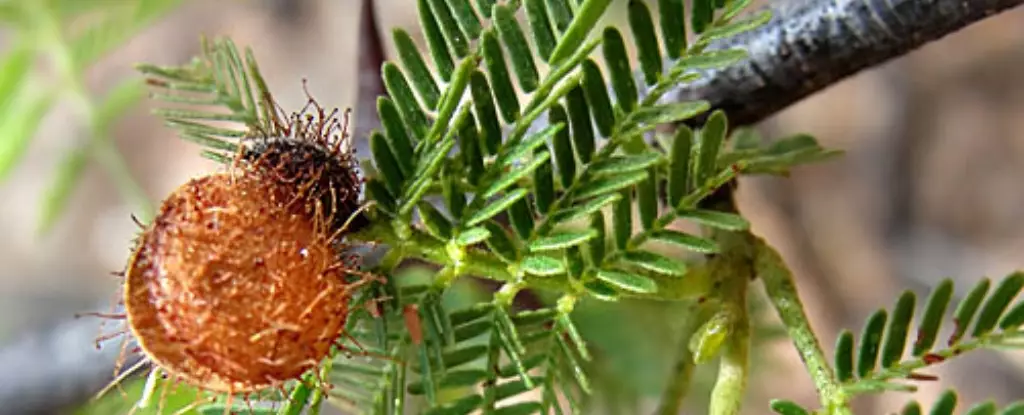In the heart of Brazil, a deep-rooted tradition has sparked curiosity across continents. The jurema preta, a plant revered in Indigenous rituals for its psychoactive properties, is now being considered a beacon of hope for those grappling with depression. This revival of jurema preta’s use in modern therapeutic contexts underscores a significant cultural shift that melds ancient wisdom with contemporary medical inquiry. For decades, this subtle, unassuming plant has served as a spiritual conduit, guiding users through introspective journeys. Today, it stands at a crossroads of tradition and science, illustrating the potential for psychedelics to disrupt established approaches to mental health.
The Science of Healing Through Psychedelics
At the core of jurema preta’s therapeutic promise lies dimethyltryptamine (DMT), a powerful psychedelic compound that researchers are increasingly investigating for its potential in treating depression. Unlike standard pharmaceutical treatments that often take weeks or months before demonstrating efficacy, DMT has yielded encouraging results in considerably shorter timeframes. Reports from patients state that within a day of treatment, they experience profound shifts in their mental state, a phenomenon that opens up questions about the mechanisms behind such rapid changes.
Physicist Draulio Araujo has been a leading voice in this research, overseeing clinical trials that involve inhaling vaporized DMT under controlled conditions. His findings have indicated that many participants report significant improvements in their mental health, supported by the addition of psychological therapy. Yet, Araujo remains cautious, emphasizing that these substances are not universal solutions. The experience of one individual with depression does not predict the outcomes for all; this nuanced understanding is crucial for advancing psychedelic therapy.
Personal Narratives: The Journey to Healing
The personal accounts of those who have engaged with jurema preta add a rich layer to the clinical data. Guaracy Carvajal, a 31-year-old software developer, epitomizes the struggle against chronic depression. His decision to explore DMT extraction at home marked a pivotal moment in his life. The surreal realization he encountered aligns with his descriptions of the psychedelic experience, where clarity and resolution take the place of despair. For Carvajal, the substance did more than momentarily alleviate symptoms—it catalyzed a thorough reevaluation of his existence.
Conversely, the responses to jurema preta can vary drastically from one individual to another. Neuroscientist Fernanda Palhano-Fontes highlights this inconsistency, acknowledging that while some patients thrive under psychedelic therapy, others continue to struggle. This reality challenges the conventional understanding of mental health treatments and reiterates the importance of personalized approaches to care.
Legal Landscape and Cultural Significance
While the obsession with psychiatric innovation escalates, the legal status of jurema in Brazil reflects a broader ambivalence towards the consumption of psychedelics. Unlike many countries, Brazil allows the cultivation of jurema and its roots, fostering a unique landscape for both traditional and experimental use. DMT remains regulated, permitted only for religious or scientific purposes, which complicates broader accessibility for potential therapeutic applications. However, these regulations provide a buffer against reckless use, maintaining the sanctity of Indigenous practices while inviting new research horizons.
Within these ceremonies, attendees often report experiences that transcend mere hallucination. For Joyce Souza, participating in a jurema ritual was about communion with deeper facets of her psyche. As participants connect through sacred practices, dressed in white and enveloped in rhythm, the collective energy becomes almost palpable, creating a space for self-discovery that extends beyond the individual.
Looking Ahead: The Future of Psychedelic Research
As researchers like Araujo continue to unveil the layers of jurema preta’s potential, the future is ripe for further exploration. The ambition to broaden clinical studies to include larger populations promises to deepen our understanding of psychedelic therapy’s spectrum—from transformative elation to profound reflection. Araujo’s hopeful projection of a clearer depiction within five years reflects both the urgency and excitement surrounding these developments in mental health treatment.
The convergence of spirituality, culture, and modern science surrounding jurema preta illustrates a fertile ground for new paradigms in healing. Each step taken in this endeavor reaffirms the potential for psychedelics to reshape how we perceive mental health and ignites the hope that perhaps ancient practices can offer contemporary solutions to age-old problems.

